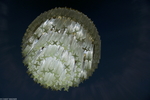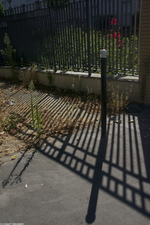The Nose & The Eye: Speed-Smelling Paintings by Jean-Honoré Fragonard {Scented Thoughts} {Perfume Shorts} {Scented Paths & Fragrant Addresses}
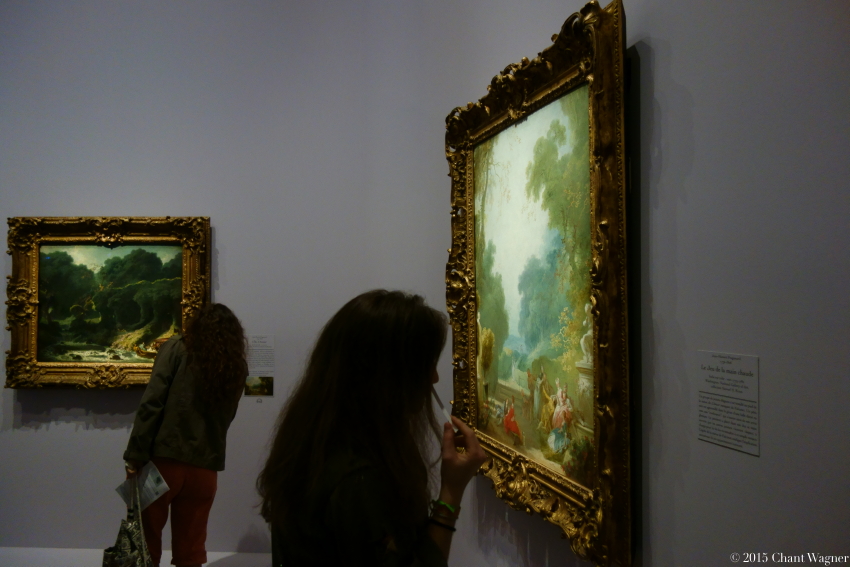
Smelling Paintings © 2015 Chant Wagner
On Saturday October 3, 2015 took place an innovative interactive experiment at the Musée du Luxembourg in Paris involving both the senses of sight and smell. On the occasion of the Nuit Blanche, a sleepless night of culture which takes place once a year for Parisians, the museum had decided to leave open its doors to art lovers until midnight allowing for a medianoche visit of the exhibition currently dedicated to the erotic paintings and sketches of 18th century artist Jean-Honoré Fragonard (1732-1802) "Fragonard amoureux : galant et libertin".
The twist was that this would be an enhanced sensory experience: the possibility to smell perfumes inspired by several Fragonard paintings. You were invited to inhale scents in situ while contemplating the original thickness of the pictorial opuses, an activity a bit more involved than, say, doing the same at home while looking at reproductions, or watching a movie...
The event was organized in partnership with the Grasse Institute of Perfumery which sent a group of 12 students to create a "parcours olfactif", i.e., an olfactive path which was meant to add, you supposed, a meaningful scented dimension to the paintings.
The use of notions such as the center or inner space of the exhibition in the French language describing the purported experience called attention to the fact that you were implicitly invited to get deeper into the experience of art, feel something different from the meanderings of a walk around art exhibit rooms guided by pannels and arrows.
In a way, you were invited to get off path and be surprised by an intimate approach to one of the passions of the French, perfume, a legitimate enough reason for associating fragrance with French pictorial art, outside of the framework envisioned by Fragonard himself.
The theme of an enamored Fragonard also calls attention to the fact that perfume and love have been intertwined symbolically for centuries, but also functionally as aphrodisiac. There are visual allusions to scents in Fragonard's paintings as in the one, for instance, where roses are offered to passerbys, a visual, accepted metaphor for prostitution at the time.
Another motivation for this approach could be construed to be biographical: the painter hails from Grasse and married another painter Marie-Anne Gérard, a miniaturist, also born in the Southern city reputed for its perfumes and fields of fragrant flowers.
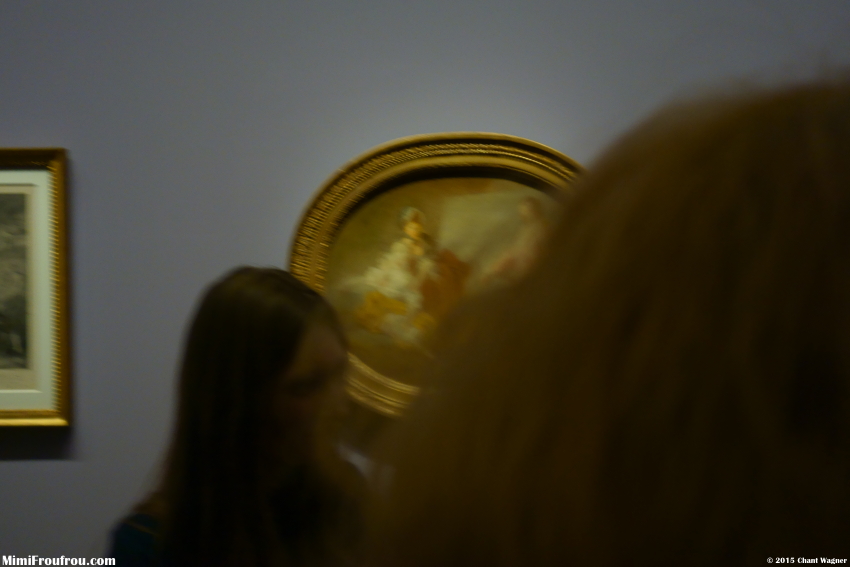
Golden Smoke © 2015 Chant Wagner
For those ready to leave the periphery of the exhibit, there would be a space called, you imagined, the essence of Fragonard, with potentially a more unmediated exchange with the artist, since smells can elicit strong, spontaneous reactions. You could envision perfume as a pathway to more hidden mystery, but also more illuminations unveiled to the future smellers. Would you see the paintings more clearly or watch them less to concentrate on scents? You imagined the smells of domesticity, potentially, of an 18th century house - all of those banal yet authentic markers of everyday life. You imagined the scents of an 18th century varietal of a rose bush as they appear so frequently in the gardens of Fragonard.
I smelled some of the olfactive takes proposed on that night and in the end, they made me think more about the arduous profession of perfumer than really about the universe of seduction depicted in the paintings.
I thought that it was meritorious of the students to try and offer olfactory interpretations of such classic art references. Kudos for that. For this perfume critic however, it offered an opportunity to experience perhaps more than the evocative scents of some of the Fragonard scenes, the level of sophistication of accords devised by young perfumers in training.
It quickly became clear to me that this "olfactory pathway" could be compared to what is termed in the fragrance industry as a "speed-smelling" event. You're invited to meet perfumers stationed at fixed posts and discover their accords, or draft-like compositions, exchange with them for a few minutes and then move on to the next perfumer and accord.
This is the structure which was offered de facto at the musée du Luxembourg, with the addition of 18th century Rococo flirty art and visions of dimpled behinds, rosy flesh, fluffy pillows, mossy gardens and deep grottoes. It was also a bit more chaotic. The pathway fragrances delineated was not very clear and amounted to stops in front of pictures with the possibility to inhale the scents from paper blotters. As the night wore on, it became visually interesting to see spills of perfume on presentation stands and paper blotters littering the floor, creating an unconventional decor for a museum art exhibit. When the blotters or mouillettes disappeared for lack of stock, you could still try and smell some of the traces of perfume on the presentation cubes. Despite this playful aspect, the olfactory part of the show proper was not optimal.
The young perfumers held their own, but smelling their accords made you measure the distance which separates a green perfumer from a grey-haired one. When you attend a speed-smelling session with professional perfumers, it is comparatively interesting also because you get to smell less polished work. It is about work in progress which is advanced enough to show its interesting potential but which remains open to improvements, and more realistically too, to patrons' specifications.
If the pros' accords smell like drafts, you can imagine how the student perfumers' accords smelled like. You could tell they were still learning to master the "basics". They are at a stage where reproducing industry well-known accords well can earn them an A. If they do it badly, it will be poorly graded. There is simply no room for originality or freedom of creation at this point in time. They can try and have original ideas, but the perfume formulations won't follow because you need so much more maturity and experience to be a mature perfumer - not to mention an original one.
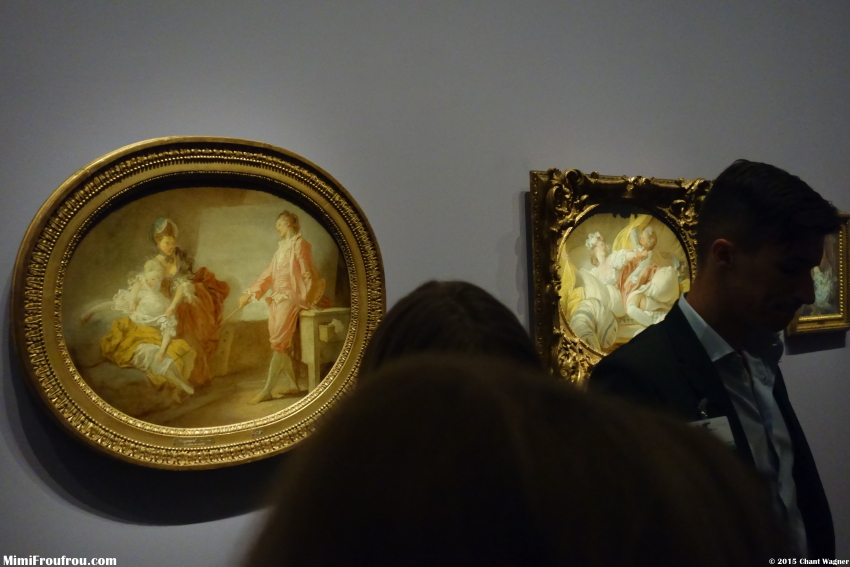
Paintings and the Nose © 2015 Chant Wagner
I have to confess that it made me better measure what it means to invest a minimum of ten years and probably more like 20 years to be an accomplished nose. There are exceptions and some perfumers have come to prominence quite young like Aurélien Guichard or Francis Kurkdjian - the former from an old family of perfumers, the latter with the support of industry veteran Chantal Roos - but most perfumers believe in and rely on the time factor and like the ancient docteurs d'Etat like to underline it took them 18 or 20 years to finish their thesis or as in our case, do meaningful perfumery work.
The perfume accords you could smell in front of the paintings of Fragonard were like exercises, i.e., stereotypical. In a way, it was unfair to ask to do this exercise to student perfumers and expect illuminations.
The positive aspect of this event is that it was a creative attempt to link eye to nose. The students will gain experience from it too. It would have probably been more moving had the idea led to a genuine historical research on the scents that would have existed at the time. In the end, it would have probably been more interesting to take this as an opportunity to do some 18th century perfumery work, or smell natural materials that perfumed the era. But juxtaposing déjà-vu, well recognizable current accords onto a coherent, classical oeuvre felt artificial and certainly did not lead to a deeper understanding of Fragonard.
The "olfactory path" at Fragonard's was about free style. One of the student perfumers even used a contemporary photograph of a siren to double up on the Île d'Amour inspiration. In a way, he seemed to be working like fashion and fragrance designers, with a mood board, more so than like a curator. The result was the smell mostly of beach pebbles, which reminded you of similarly themed home fragrances or more particularly, L'Artisan Parfumeur Côte d'Amour. Later on, on the streets you noticed that the fragrance had good rémanence, which is a technical positive.
Another attempt to imagine the scents in Les Débuts du Modèle (shown above) revolved around the notion of the smells floating in the air of an 18th century painter's studio. It smelled mostly of turpentine and beeswax. It made you think more of an olfactory imprint than of a truly atmospheric fragrance telling itw own story.
In front of L'Adoration des Mages and Le Verrou which were close together, you could smell something powdery and boudoir-like. Again, it lacked specificity. It was nicely generic. It could have smelled downright bad, but it didn't. And by the by, the student perfumers did not aim for repulsive, upsetting or provocative smells. Their accords were more interested in cultivating harmony, which they have to master before they can deconstruct more.
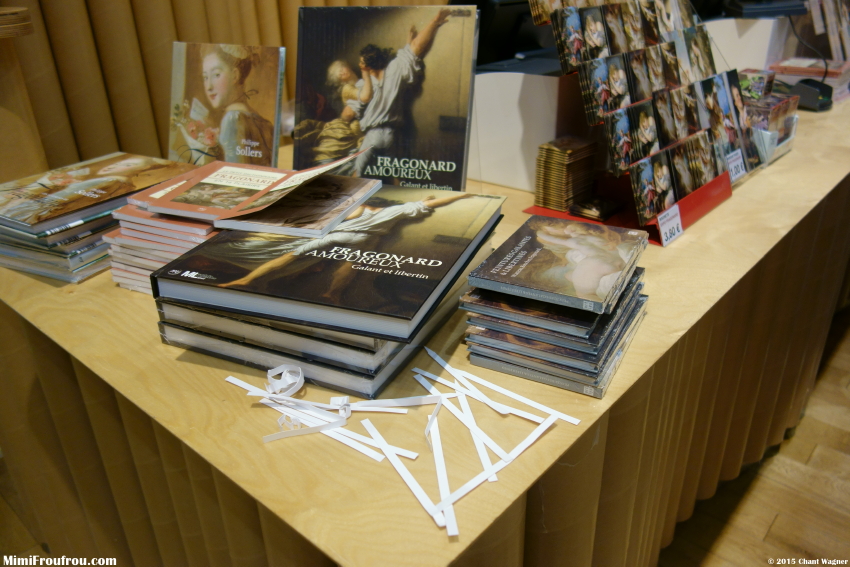
The Event was well received: Mouillettes at the Musée du Luxembourg © 2015 Chant Wagner
By the time you had reached the end of the olfactory pathway, it was clear that you had been invited inside the perfumer's studio rather than inside the painter's studio. You were smelling what the apprentices were learning to do. They have the passion and the work ethic, no doubt, but it will take a while before they can produce true, evocative equivalents of Fragonard paintings, if they one day decide to go back to the drawing board.
The art of perfumery is hard, even very hard, this was evident on that 2015 Nuit Blanche. Visitors had fun, but I'm afraid they are less able to judge than, say, if they were tasting pastries done by student pastry chefs.
As for the future of scented art exhibitions, it might constitute a better homage to the visual arts to either really strip down to the basics, i.e., the materials, research them thoroughly, reconstitute them, or alternatively rely on the expertise of confirmed perfumers working in collaboration with curators who know about historical smells and perfumery materials.
If curators are not trained in olfactory history, well, then, here's another opportunity to think about what this discipline might be like and how necessary it might be for a well-rounded safeguarding of cultural patrimony.







